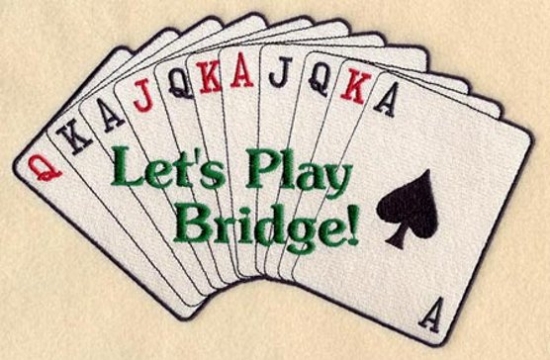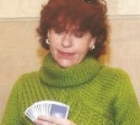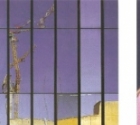
The nautical term “jettison” refers to the practice of throwing cargo overboard to lighten a ship to prevent it from sinking. The jettisoned cargo often had a high value but nothing, of course, compared to that of saving the ship. So too in bridge: It is sometimes necessary to discard what appears to be a winning card in order to bring home a contract.
I alluded to such a jettison play in the article entitled “Enter the Knave” in the previous edition of ESRA, number 164, April-May 2012. In the hand in question, a 3NT contract, the winning defense was for East to discard the ♦K to avoid blocking partner’s established diamond suit.
A few days after I wrote the article, a similar situation came up in a local tournament. Sitting East, I ambitiously led a small club against the opponent’s 3NT contact, reached after the dealer, North, had bid diamonds and spades and his partner had repeated hearts at the two level.
My partner played the ♣10 which declarer won in hand with ♣A, won the second round of hearts with her ♥K and continued with the ♣J. Declarer won with the ♣K and no ran his established heart suit. The full hand was:
| North ♠ K 9 7 2 ♥ Q 9 8 ♦ A K 8 4 ♣ A K |
||
| West ♠ 5 4 3 ♥ K 7 5 ♦ J 10 6 5 ♣ Q J 10 |
East ♠ A J 10 ♥ 6 2 ♦ Q 9 7 ♣ 9 8 6 5 3 |
|
| South ♠ Q 6 4 ♥ A J 10 4 3 ♦ 3 2 ♣ 7 4 2 |
On the fourth round of hearts, my partner, realizing the only hope to defeat the contract was that I had one of the remaining Aces, jettisoned her ♣Q. When I got in with the ♠A, I was able to cash 3 club winners to defeat the contact. Of course, had declarer played to score one spade trick before running hearts, thereby depriving my partner of the opportunity for her brilliant jettison, he would have brought his contract home safely.
The use of the jettison play is not restricted to defense. In fact, it is a valuable weapon in the armoury of declarer as well. By way of an example, here is a hand, memorable not because it ended in glory but because my hasty play cost my team victory in a Swiss Teams tournament in Dayton, Ohio in 1971. Yes, it still irks to this day!
|
North |
||
| West ♠ J 8 3 ♥ K Q 10 9 7 2 ♦ 10 ♣ K Q 9 3 |
East ♦ J82 ♣ 7654 |
|
|
South |
I was declarer in 3NT with the South hand. West led the ♥K, which I ducked, and then continued with the Queen of that suit. Counting 9 tricks on top – 1 heart, 2 spades, 1 club and 5 diamonds, I won the second trick with ♥A in dummy, East discarding a small club. A diamond to my ♦Q, followed by the Ace, revealed the 3-1 split in that suit. Although I still had the ♦K in dummy to capture East’s knave, the ♦9 blocked me in my hand and prevented me from cashing dummy’s fifth diamond. One down.
The correct play was to duck the second heart and win the third round in dummy, jettisoning the ♦9 from hand – not as spectacular, or as obvious, as the jettison of a high honour card. Even if West had not continued hearts, I could have won the third trick in hand, played the diamonds as before but this time, when in dummy with the ♦K, I could have played the ♥A myself for the jettison of the “high” diamond from my hand. Not all jettison plays are for the purpose of unblocking or keeping the lead in a specific hand. Consider the following hand where you, South, are declarer in 4H after East opened 1NT. West leads the ♣J.
| North ♠ J 10 ♥ 5 2 ♦ A 5 3 2 ♣ A 10 8 4 2 |
||
| West ♠ K 6 5 4 3 ♥ 6 3 ♦ J 10 9 6 4 ♣ J |
East ♠ A 7 ♥ A 4 ♦ K Q 8 7 ♣ Q 9 7 6 3 |
|
| South ♠ Q 9 8 2 ♥ K Q J 10 9 8 7 ♦ - ♣ K 5 |
With only one trump and two spade losers on top, the contact looks secure. However, the ♣J lead looks suspiciously like a singleton and East most surely has the ♥A entry to give his partner a club ruff. Can you see a jettison play that allows you to prevent the opponents fromscoring a trump of a club?
Win the club lead in dummy with the ♣A. Next play the ♦A from dummy and discard the ♣K from hand, thereby voiding your hand of clubs. When you subsequently loose a trump to East’s ♥A, you yourself can trump the club return and West cannot over-ruff. Exit the Regent!
 Let’s have a bit of Playback
Let’s have a bit of Playback-1372659501.jpg) Buying New Construction in Israel
Buying New Construction in Israel A lot of hot air - ballooning
A lot of hot air - ballooning Bridge the right way
Bridge the right way A Bit of Humor on Food
A Bit of Humor on Food ESRA Photo enthusiasts meet monthly
ESRA Photo enthusiasts meet monthly Alan Caplan
Alan Caplan